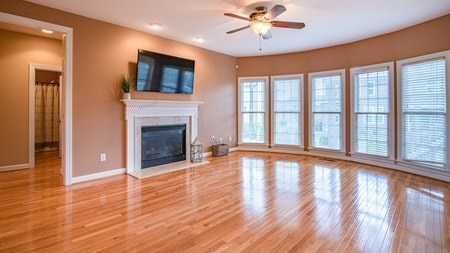Summer is here – well, in most parts of South Africa, anyway - and an air-conditioner might seem like the obvious way to keep cool.
But higher electricity bills have made many homeowners think twice before installing these power-hungry appliances. For example, a single 1 500 W room or window air-conditioning unit running for six hours a day will cost over R500 a month to run at present electricity tariffs.
The general use of air-conditioners will put additional pressure on South Africa’s overtaxed power grid – increasing the risk of loadshedding as well as emissions from coal-fired power stations.
Old favourite
More and more budget-conscious and environmentally aware homeowners are turning once again to ceiling fans.
These low-tech appliances create an overhead draft that immediately makes you feel cooler and more comfortable. As a bonus - they only cost about R50 a month to run.
Size matters
To get the full benefits, it’s important to determine the correct fan size for each room and install it in the right place.
The bigger the room, the bigger the fan needed. Start by measuring the longest wall in the room.
- If it is less than 4m, you'll need a fan that is 1m in diameter.
- If the longest wall is 4 to 5m, get a 1.5m fan.
- For anything over 5m, you'll need a 2m fan.
- If you’re cooling a large, rectangular room, it’s best to install two or more fans, evenly spaced.
Fan blades
Additional factors to consider are the number of blades on the fan and the materials they are made from.
- For optimal efficiency, ceiling fans should have three to six blades.
- Uneven blades will cause the fan to wobble, so choose blades in a material that won’t warp.
- Rust-proof finishes are important - especially in damp coastal climates.
Ceilings
You also need to consider ceiling height. Most manufacturers recommend that the distance from the fan to the floor should be 3m if possible. To ensure safe operation, a ceiling fan should never be mounted less than 2m from the floor.
Ceiling fans are fairly heavy, weighing 8kg or more, so they should be securely anchored to a sturdy roof beam.
Control
If the room has no existing central light fixture, you will need to cut through the ceiling and install new wiring and a switch.
If you’re replacing an overhead light with a fan/light combination, you need to decide which controls will work best.
Options include:
- Pull chains.
- Wall-mounted control boxes.
- Handheld remote controls.
Installation
Unless you are an expert in electrical improvements, it’s best to have ceiling fans professionally installed. In any event, you will need an accredited electrician to certify them as safe and issue a certificate of compliance.
Once installed, ceiling fans are part of your home’s electrical system, and apart from the risks to personal safety, your home owner’s insurance cover could be void if they are faulty.





